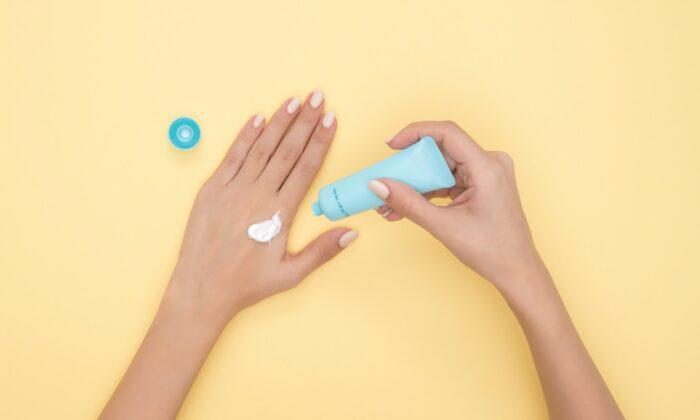When it’s cold outside, we can cover up and hide any unsightly skin with sweaters and turtlenecks, but when summer rolls around, cooler outfits can leave us feeling exposed—and nobody wants to have crepey skin out in the open. Let’s discuss what we can do about it now, and how we can address it for the long term.
What Is Crepey Skin?
Crepey skin gets its name from crepe paper, a thin, crinkly type of tissue paper, and it refers to changes in the middle layer of skin (dermis) involving thinning, dehydration, and structural loss due to a lack of collagen and elastin. It’s typically seen where sun damage has taken place, such as on the décolletage, around the eyes, and on the backs of hands.
Quick Fixes
Chemical exfoliation is another tool in the fight against crepey skin. Alpha hydroxy acids including glycolic, lactic, and malic acids can be used as gentle exfoliants. These smooth the skin on the surface, brightening its appearance. They’re also inherently humectant, increasing the production of hydrophilic molecules that help draw water into the skin and keep it hydrated (glycosaminoglycans), and maintaining the skin’s structural integrity by providing volume, elasticity, and firmness.
Long-Term Solutions
“It’s really important to remember that it’s not just about a daily sunscreen habit for the face,” said Bunting, “we must pay attention to those areas that catch a lot of incidental UV over time.” Regardless of the season, even minor daily exposure can be insidious, and it needs attention. Protect your neck and décolletage, and don’t forget about the backs of exposed hands and forearms. Be generous, use plenty of sunscreen, and become diligent about doing it every single day.
Antioxidants including vitamins A, C, and E are compounds that safeguard the body’s cells, and they can be utilized daily as well, powerfully neutralizing the damaging effects of free radicals, which degrade the dermis’s collagen, decreasing its density.
By regularly applying sunscreen and taking in antioxidants, we can maintain our dermal structure over time, but if we want to do any better than that, then we need to build more collagen.
Collagen is a fundamental protein responsible for the thickness and resilience of our skin. Retinoids (vitamin A from animal sources) ramp up the body’s collagen production and, together with microneedling, can factor into an effective treatment for sun damage. Profhilo, a newer treatment in which hydrating microinjections of a soft, gelatinous form of hyaluronic acid are employed, can also stimulate collagen and elastin production. Even for those of us who are averse to procedures, these are easy ways to help improve skin quality.
While quick fixes can have temporary cosmetic benefits, the best results are seen when crepey skin is carefully managed. Commit yourself to increasing the density of your dermis and caring for your skin over the long term. Make a habit of using sunscreen daily, together with antioxidants and retinoids, and your skin will thank you for it!





